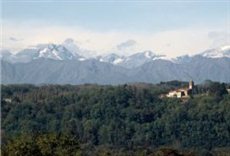The forest of Monte San Giacomo
Diversified educational opportunities in a highly attractive natural environment.
This park is situated in the Alpine foothills, and its name comes from the Monte San Giacomo hill in the municipality of Vergiate, more specifically at a location named Cuirone.
The reserve is distinctive for the typical moraine hill-type vegetation, with a high degree of biodiversity. The species present include forests of scots pine, chestnut copses, and crop-forests of broad-leaved trees including pedunculate oak, sycamore maple, false acacia, limes and hornbeam.
This valuable natural environment forms a natural refuge for squirrels, foxes, water voles and edible dormice, as it represents an oasis for reproduction and nutrition. Other species found in the dense forest include tits, the nuthatch, wren, fire salamanders and frogs.
A visit to the park also includes a variety of educational opportunities, such as laboratories presenting the plant species in the forest and its ecosystem, and explanations on how to interpret the area, above all in terms of the relationship between man and environment, with detailed information on features of the area linked to forestry, geomorphology, geology and fauna.
This park is situated in the Alpine foothills, and its name comes from the Monte San Giacomo hill in the municipality of Vergiate, more specifically at a location named Cuirone.
The reserve is distinctive for the typical moraine hill-type vegetation, with a high degree of biodiversity. The species present include forests of scots pine, chestnut copses, and crop-forests of broad-leaved trees including pedunculate oak, sycamore maple, false acacia, limes and hornbeam.
This valuable natural environment forms a natural refuge for squirrels, foxes, water voles and edible dormice, as it represents an oasis for reproduction and nutrition. Other species found in the dense forest include tits, the nuthatch, wren, fire salamanders and frogs.
A visit to the park also includes a variety of educational opportunities, such as laboratories presenting the plant species in the forest and its ecosystem, and explanations on how to interpret the area, above all in terms of the relationship between man and environment, with detailed information on features of the area linked to forestry, geomorphology, geology and fauna.





